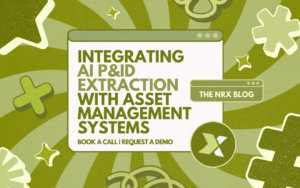A recent study found that 83% of data migration projects either fail or exceed their budgets and timelines. These numbers highlight the challenges organizations face when moving critical maintenance data into a new CMMS. Without proper planning and execution, businesses risk data loss, poor data quality, and disruptions to operations during migration.

What Is CMMS Data Migration?
A CMMS is software designed to help organizations manage maintenance operations by storing data about assets, work orders, preventive maintenance schedules, and inventory. CMMS data migration refers to transferring this information from a legacy system into a new CMMS platform. Although it may sound straightforward, data migration often involves thousands of records, decades of historical data, and complex formatting requirements that can make the process error-prone.

Best Practice 1: Data Assessment and Cleansing
One key best practice for a smooth CMMS data migration is thorough data assessment before the transfer begins. Many organizations fail to evaluate the quality and structure of their legacy data, resulting in inaccuracies carried over to the new system. According to Gartner, poor data quality costs organizations an average of $12.9 million annually due to operational inefficiencies. Cleaning and validating data before migration can significantly reduce errors and rework later on.
Best Practice 2: Clear Data Mapping Rules
Another critical factor is defining clear data mapping rules. Data mapping ensures every field in the old system aligns properly with the new CMMS structure. For instance, asset ID formats may differ between systems, which would require standardization. In this case, a well-defined and verified data mapping process early in the project helps avoid data mismatches and ensures the new system supports maintenance workflows from day one.
Best Practice 3: Testing Throughout the Migration
Testing is another step often overlooked during CMMS data migration. Running multiple trial migrations allows teams to verify that data has been transferred correctly and is accessible in the new system. Organizations that conduct multiple rounds of testing during migration often experience fewer issues at go-live and a smoother transition overall compared to those that skip this step.
Conclusion
CMMS data migration is not simply a technical exercise; it is a strategic initiative that directly influences the efficiency and accuracy of asset management operations for years to come. Organizations that dedicate time and resources to thorough data cleaning, precise mapping, rigorous testing, and ongoing monitoring can ensure a smoother transition to their new system. This preparation also establishes a stronger foundation for maximizing the long-term value and return on their CMMS investments.
Integrating AI P&ID Extraction with Asset Management Systems
ISO 14224 vs Other Maintenance Standards: What Sets It Apart?
Building Trust in Your Asset Data: Strategies for Governance
Share this article




